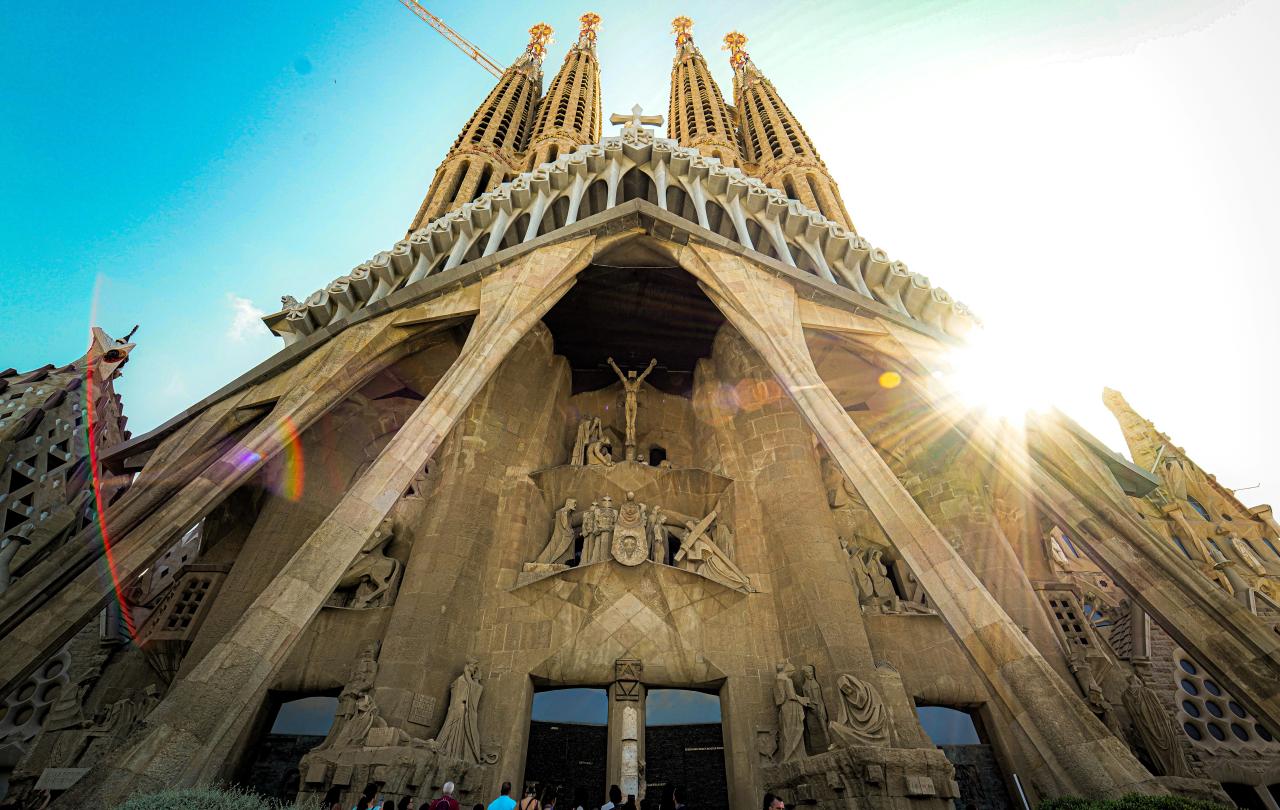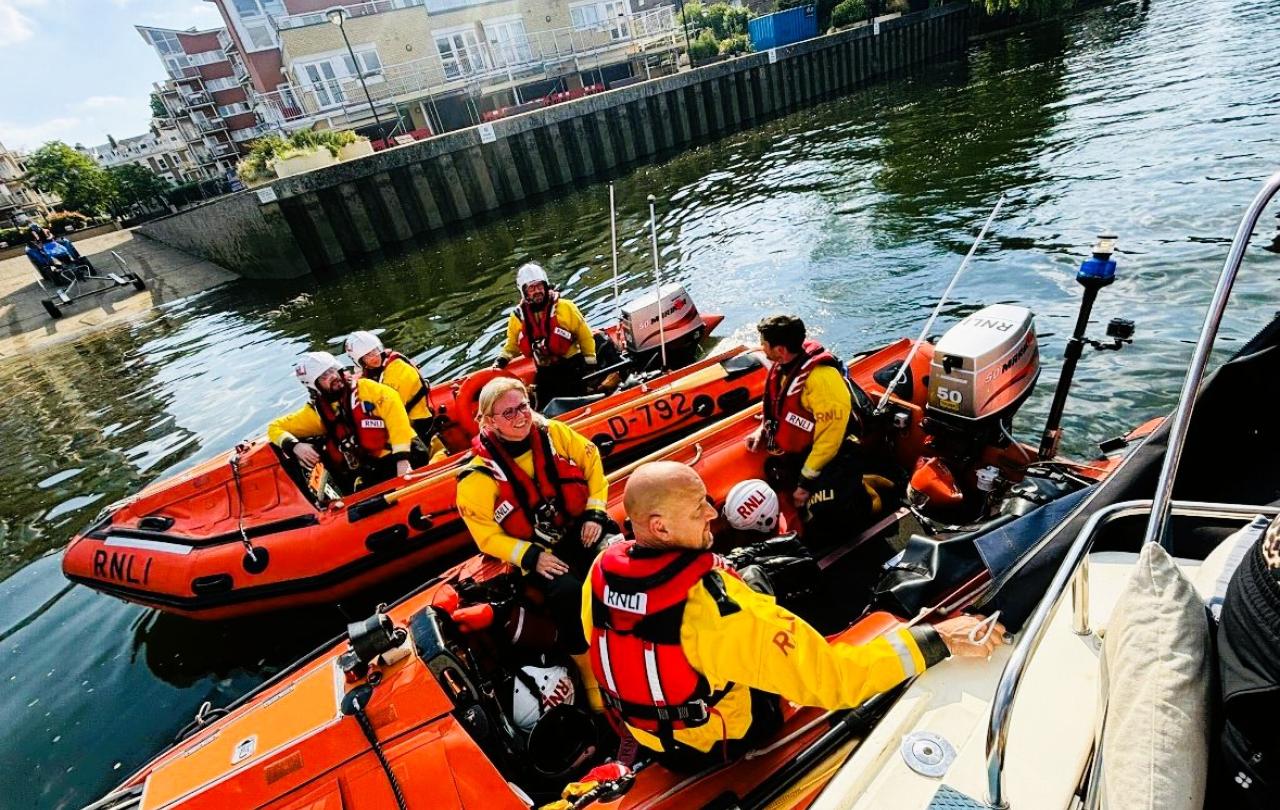
Barcelona is a magnet for tourists and art lovers because of the sense of exuberance and abundance created by the sinuous, sensuous curves and colours of Antoni Gaudí i Cornet’s amazing buildings. Whether we are encountering the shifting sea-like blues of the Casa Batlló, the abstract collage of the wave-like trencadis mosaic bench at Park Güell, the whirlpool-like undulations on the ceiling at Casa Milà, the columns in the Crypt of Colònia Güell which form a wood of trees, or the sunflower forms on the ceiling of the Sagrada Familia, Gaudí's work possesses an ecstatic sense of natural beauty. The Sagrada Familia, his still unfinished magnum opus, attracts over 4.5 million visitors a year, 85 per cent of whom come from outside Spain.
Known as ‘God’s Architect,’ Gaudí, in one of the last acts by the late Pope Francis, was declared Venerable, a step on the path to sainthood. He was recognised for the heroic virtues which encompass faith, hope, and charity, with Divine charity being paramount. The Vatican’s announcement noted that when Gaudí accepted the task of directing the project of the Basilica of the Sagrada Familia in 1883, his focus was “making art a hymn of praise to the Lord” and “he considered it his mission to make God known and bring people closer to Him”. Also noted was the humility of his death after being struck a tram on June 7, 1926. Unrecognized, the architect was taken to the Hospital de la Santa Creu, the city’s hospital for the poor and, after receiving the last sacraments, he died three days later, on June 10. Around 30,000 people then attended his funeral.
The Sagrada Familia is primarily experienced as a forest of columns through which light falls in glowing colours. As in medieval cathedrals the eye is drawn upwards towards the light and glory of God, here by means of slender trunk-like columns, which branch (for reasons of form and function) before the ceiling of the basilica, where natural and artificial light mingle in star-like shapes resembling sunflower heads. Lower down, the abstract stained glass of Joan Vila-Grau filters the blazing natural light of the Catalan sun through primary colours to create a sense of mystery even among the thousands of tourists crowding the space for the best camera angles.
Among the columnar forest and stained light (if one ignores the baldachin, which is an example of the gaudy Gaudí), there is an almost total absence of explicit Christian iconography, creating a special interior sense of spiritual space. Unlike a medieval cathedral where the Christian story is told inside in stained glass, Gaudí placed the narrative element on the exterior of the building to form a Bible written in stone through three facades: Nativity, Passion and Glory.
Much of Gaudí's work was marked by his big passions in life: architecture, nature and his Catholic faith. He integrated into his architecture a series of crafts in which he was skilled - ceramics, stained glass, wrought ironwork and carpentry - and introduced new techniques in the treatment of materials, such as trencadis, a special type of mosaic made of waste ceramic pieces.
After a few years under the influence of neo-Gothic art and Oriental techniques, Gaudí became part of the Modernista movement which was reaching its peak in the late 19th and early 20th centuries. His work transcended mainstream Modernism, culminating in an organic style inspired by nature. He was the great sculptor, utilising natural form in his work both for utilitarian and aesthetic reasons. He described nature as “the Great Book, always open, that we should force ourselves to read” and, as the art critic Robert Hughes recognised, thought that “everything structural or ornamental that an architect might imagine was already prefigured in natural form, in limestone grottoes or dry bones, in a beetle's shining wing case or the thrust of an ancient olive trunk.”
It is said that Gaudí’s aim at the Sagrada Familia was to bring heaven and earth together.
Although driven, single and celibate Gaudí was not an ascetic loner. He surrounded himself with work colleagues to whom he gave significant responsibility. He was also well aware that work on the Sagrada Familia could only be completed by the architects, sculptors and craftspeople who would follow his team and plans. Gaudí and his primary patron, Eusebi Güell, were men of great vision and vast ambition, resulting, among other accomplishments, in the Crypt of Colònia Güell, which consists only of the lower nave of what was intended to be a larger building. Their example suggests that to reach for the impossible and fail can nevertheless result in significant achievement.
The Crypt of Colònia Güell is a culminating point in Gaudi's work, where he included for the first time practically all of his architectural innovations. He said that without the large-scale experiments he undertook there, he would not have dared apply those same geometries to the Sagrada Familia. It is the place where, according to Japanese architect, Arata Isozaki, he “overcame all established limits regarding shapes.”
This church of Colònia Güell was blessed by the Bishop of Barcelona in 1915 and today functions both as parish church and tourist attraction. Like the Sagrada Familia, albeit on a smaller more intimate scale, its varied columns form a wood of trees. Flower-like, cross-shaped stained glass in primary colours creates a warmth to the space which is complemented by the red brick forming the walls and catenary arches of this cave-like space.
This is a warm, womb-like enclosure; intimate yet archetypal. It is real and usable communal space while also being of great architectural worth, innovation and beauty. Here the ‘heaven in ordinarie’ of the Eucharist is celebrated in the surround of natural forms recreated by man-made means. It is said that Gaudí’s aim at the Sagrada Familia was to bring heaven and earth together. It may well be that this aim is more fully realised in the earthy intimacy of the Colònia Güell’s wooded Crypt than in the soaring grandeur of the Sagrada Familia.
In welcoming the news that Gaudí had been declared Venerable, Cardinal Juan José Omella, Archbishop of Barcelona, said “It is a recognition not only of his architectural work but something more important.” He continued: “He is saying you... amid life's difficulties, amid work, amid pain, amid suffering, are destined to be saints.” Ultimately, he notes, “Gaudí’s life and work show us how beauty and holiness can transform the world” as they include the “recognition that sanctity can be found amid scaffolding, suffering, sublime obsession.”
Celebrate our 2nd birthday!
Since Spring 2023, our readers have enjoyed over 1,000 articles. All for free.
This is made possible through the generosity of our amazing community of supporters.
If you enjoy Seen & Unseen, would you consider making a gift towards our work?
Do so by joining Behind The Seen. Alongside other benefits, you’ll receive an extra fortnightly email from me sharing my reading and reflections on the ideas that are shaping our times.
Graham Tomlin
Editor-in-Chief





